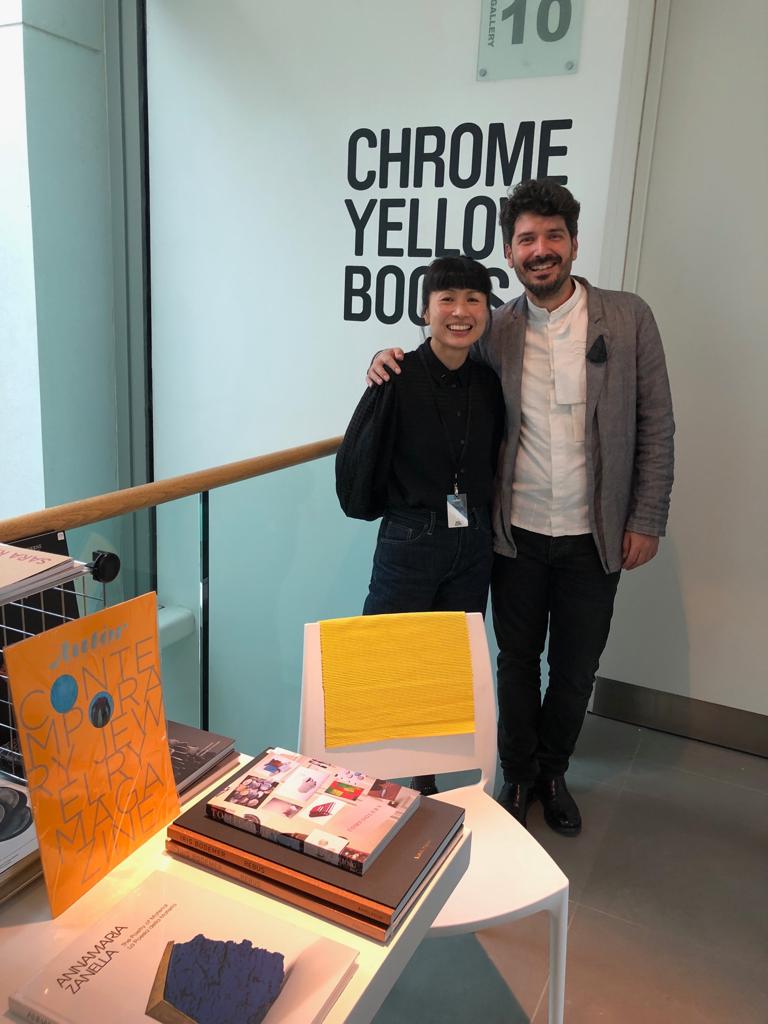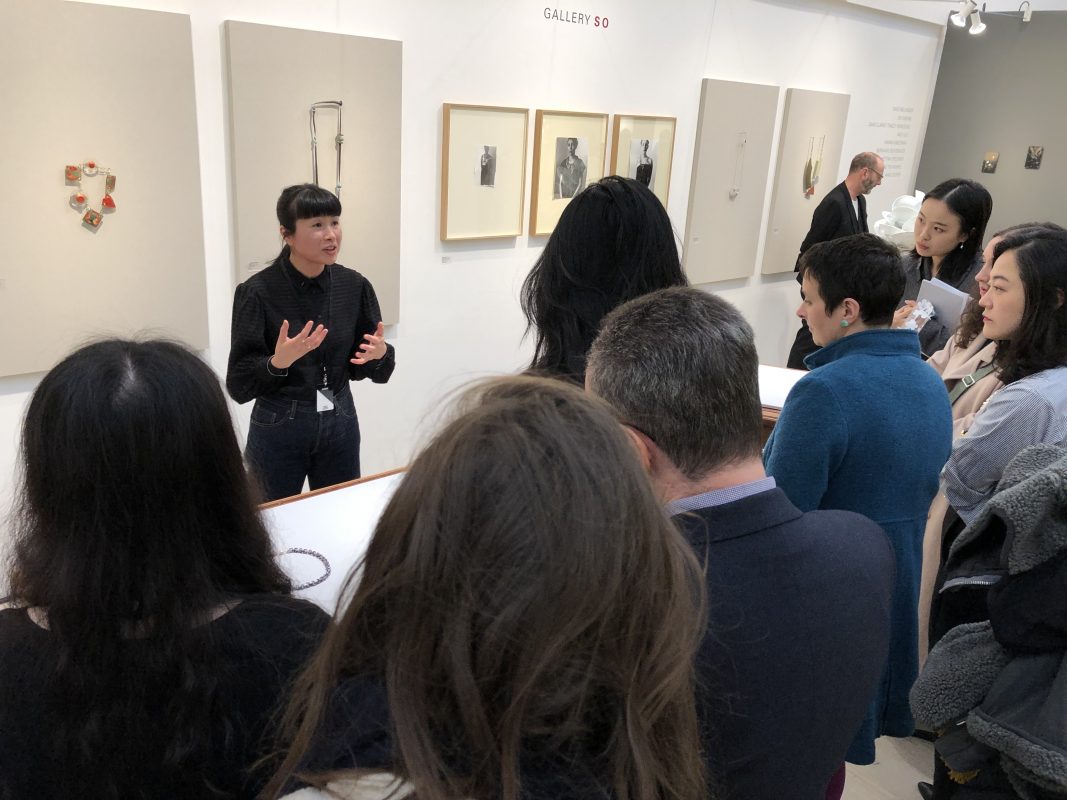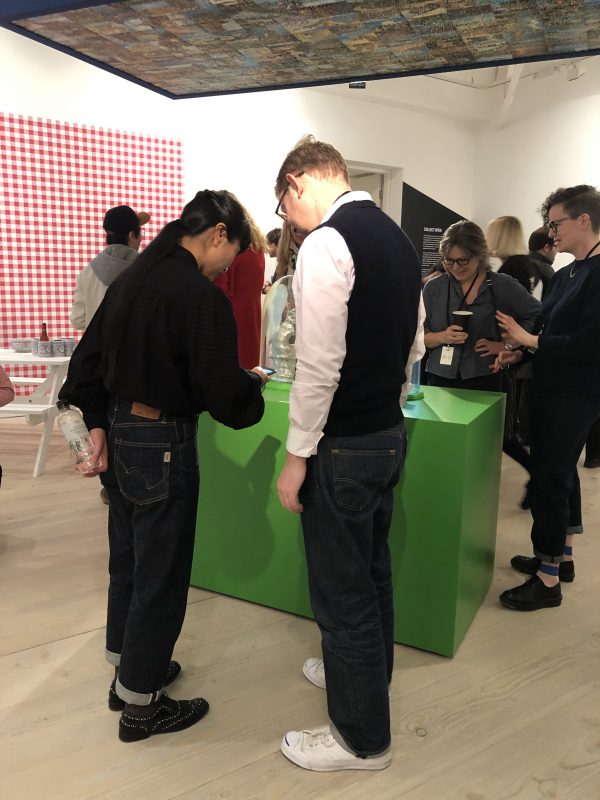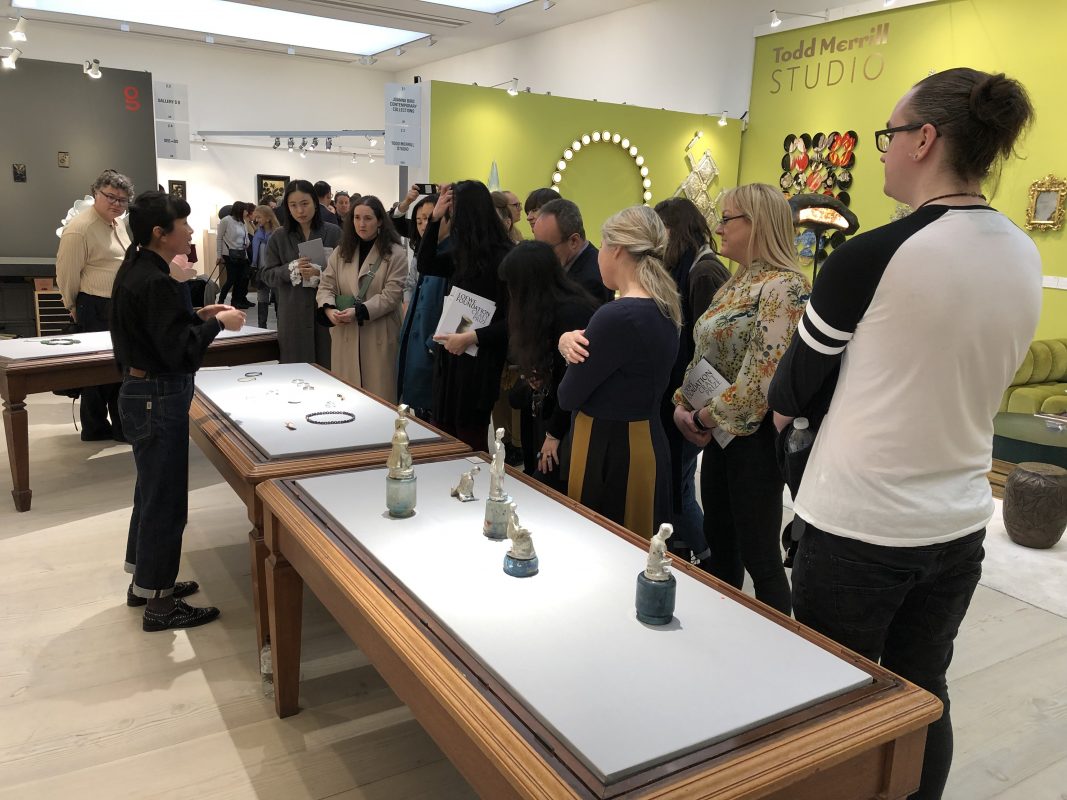Lin Cheung, newly awarded with the Francoise Van Den Bosch Prize: I like the last moment of creation to be a gut feeling – if I still feel a spark of that first feeling, I am happy in the end.
An AUTOR interview during Collect International Art Fair for Modern Craft and Design 2019 ⫸ SO Gallery ⫸ London ⫸
 Dan Pierșinaru: When you look at a jewelry as a human, as an artist or as a teacher, do you know if the jewelry was made with joy or not? Do you think the people can sense if there is joy involved in the process?
Dan Pierșinaru: When you look at a jewelry as a human, as an artist or as a teacher, do you know if the jewelry was made with joy or not? Do you think the people can sense if there is joy involved in the process?
Lin Cheung: Because there is a lot of different jewelry and it is almost everything you can think of, there’s definitely joy there. It just may not be in some pieces or in some work, at least this is how I see from my perspective, because it’s not the first thing that always comes at you. When you go and look at a work in the jewelry field you sort of go through all the emotions, or at least I do. It must be noted that my perspective can be influenced by what I’m feeling, what my relationship with that person is; if I don’t know the person, if it is a younger maker, or an establish one. I have to somehow strip away from my thinking to experience these pure emotions, this joy that jewelry transmits.
In general, I find it very joyful. Other times, I see an entire specter of emotions in people’s work or even just in one piece, as part of a collection. It differs, it’s a very personal choice. I wouldn’t say that in general jewelry it’s about joy – even if it sounds very pessimistic, but for me it’s about mixed emotions. I really go up and down, in and out with my emotions and this mix excites me, as well as I am disturbed by it. It makes me feel alive – seeing diverse, interesting works.

D.P.: How do you manage your filters? How do you succeed in having that personal touch in your work?
L.C.: If I hear “filter” I am thinking of something practical, so you are allowing only certain things in and you are reducing the creative freedom. I sometimes do that – I filter my work. There is the case in which I have an idea that was asleep for a long time, but then I go back and see if that idea is still vivid, still alive, if it still has potential. It’s like growing something. I’d compare my creative process with little seeds waiting to grow, seeds ready for possibilities. I often go back and see what will be good to take forward, what am I still interested in, what do I like to do, what do I feel like doing, what do I want to do now. Sometimes, I think I don’t exactly know what drives me to think about doing certain things, but, overall, I believe it’s a natural process. Don’t overdo it. It must be a not so filtered process. It must be a process of just whatever remains important at that moment.
D.P.: Your recent work makes us think that you are a person aware of the surroundings, of the contexts you’re in, of what’s happening around you. You work with situations from outside as well, your jewelry has a meaning, a message to transmit. Is this important for you – that jewelry should transmit a very clear message?
L.C.: It’s important we try and communicate a clear message in whatever we do. It’s in the doing and in trying to make your work engaging – but also to say “it’s important for me”. I try not to asses it too much afterwards. I like the last moment of creation to be a gut feeling – if I still feel a spark of that first feeling, I am happy. Maybe that’s the point, trying to encapsulate, trying to get that into my work and have some kind of engagement with people – a sort of connection with them and situations all around the world. It’s a way of feeling out what’s going on.

D.P.: I think there are a lot of young people in the world who want to be involved in contemporary art, but somehow, for many of them, contemporary jewelry is not something quite clear, it’s very cryptic. Do you feel like you have a message for them – from your experience as an established designer and as a teacher? Do you think they should work in a way or understand things in a way in order to get closer to contemporary jewelry and art jewelry?
L.C.: Because I have been teaching and working for a long time, I do see the landscape of how young people are coming out from education – it’s very different than when I did it. When I started out, things were freer, easier and actually you could do things yourself, you could just start things. It is much more competitive these days. Today it’s a very competitive environment, sometimes causing a lot of anxiety and making you feel like you have to get into a certain way of doing something. That’s why it is much harder to try and teach someone to follow their hearts. Everything is going against that.
If I look back to the people that influenced me or that helped me, the ones that offered a helping hand, an opportunity or just said “yes” – they were following their heart. It involves taking little risks and believing in something. Also, young people are young enough to be trying lots of different things out – that’s also the nice thing about the present – there are more opportunities, so you could try different things and just see other experiences. Within all of that, I encourage young designers to keep following that something, that true path of what they want to do. But it’s important to stay realistic. Just like balance: have dreams, but realistic ones.

Although, I think it’s ok to keep dreaming, because that gets you to take those risks. If you don’t know what to expect, you might need to search a little bit harder. Do recognize that there are a lot of people around you, willing to help you, to support you – that feeling that you don’t have to do everything on your own. This is very encouraging and very good. You might want to do unique work or you want to be unique, but your situation is not – but there are a lot of people that have been through what you are dealing with. That’s why I’m saying to the young people just to tap into that, connect with those people, that network. It’s really good to know you’re not alone. Even if you want to be an alone, unique artist, we’re all connected together, so whatever you achieve is built upon other’s successes. It’s quite nice to think like that. One day, you’ll give back too. I think this is where I am right now. I enjoy teaching because I feel my experiences have some kind of “giving back”.
D.P.: What is contemporary jewelry for you now?
L.C.: If I try to sum it up, I don’t think I can. But what comes first in my mind is that yesterday I was thinking about today, about Gallery SO, about this interview. Today is about thinking of tomorrow, which is about Munich Jewelry Week. Contemporary jewelry is a daily existence. It’s up to the reader how this “daily existence” is interpreted.
You can find out more about Lin Cheung here: